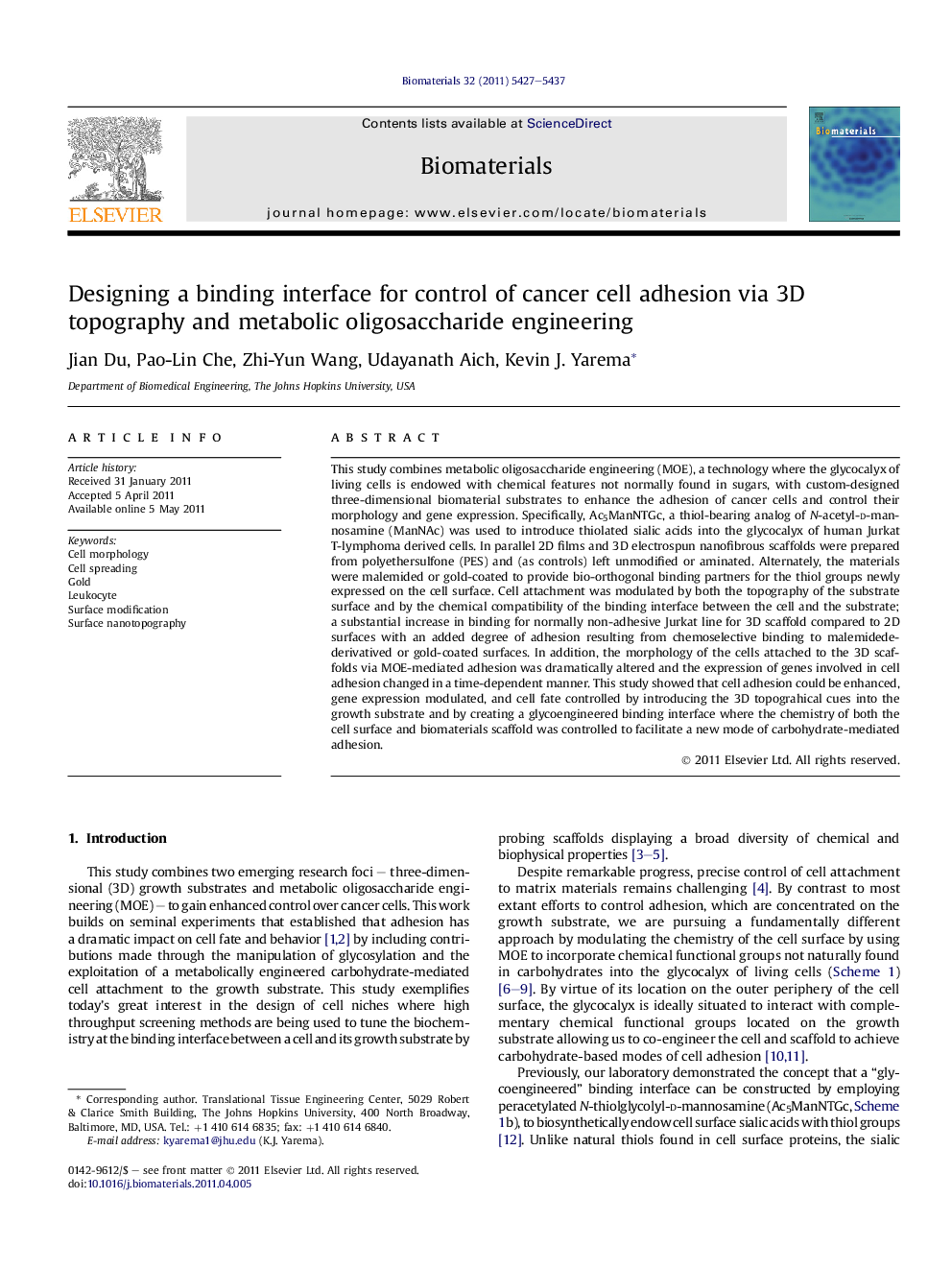| Article ID | Journal | Published Year | Pages | File Type |
|---|---|---|---|---|
| 8212 | Biomaterials | 2011 | 11 Pages |
This study combines metabolic oligosaccharide engineering (MOE), a technology where the glycocalyx of living cells is endowed with chemical features not normally found in sugars, with custom-designed three-dimensional biomaterial substrates to enhance the adhesion of cancer cells and control their morphology and gene expression. Specifically, Ac5ManNTGc, a thiol-bearing analog of N-acetyl-d-mannosamine (ManNAc) was used to introduce thiolated sialic acids into the glycocalyx of human Jurkat T-lymphoma derived cells. In parallel 2D films and 3D electrospun nanofibrous scaffolds were prepared from polyethersulfone (PES) and (as controls) left unmodified or aminated. Alternately, the materials were malemided or gold-coated to provide bio-orthogonal binding partners for the thiol groups newly expressed on the cell surface. Cell attachment was modulated by both the topography of the substrate surface and by the chemical compatibility of the binding interface between the cell and the substrate; a substantial increase in binding for normally non-adhesive Jurkat line for 3D scaffold compared to 2D surfaces with an added degree of adhesion resulting from chemoselective binding to malemidede-derivatived or gold-coated surfaces. In addition, the morphology of the cells attached to the 3D scaffolds via MOE-mediated adhesion was dramatically altered and the expression of genes involved in cell adhesion changed in a time-dependent manner. This study showed that cell adhesion could be enhanced, gene expression modulated, and cell fate controlled by introducing the 3D topograhical cues into the growth substrate and by creating a glycoengineered binding interface where the chemistry of both the cell surface and biomaterials scaffold was controlled to facilitate a new mode of carbohydrate-mediated adhesion.
